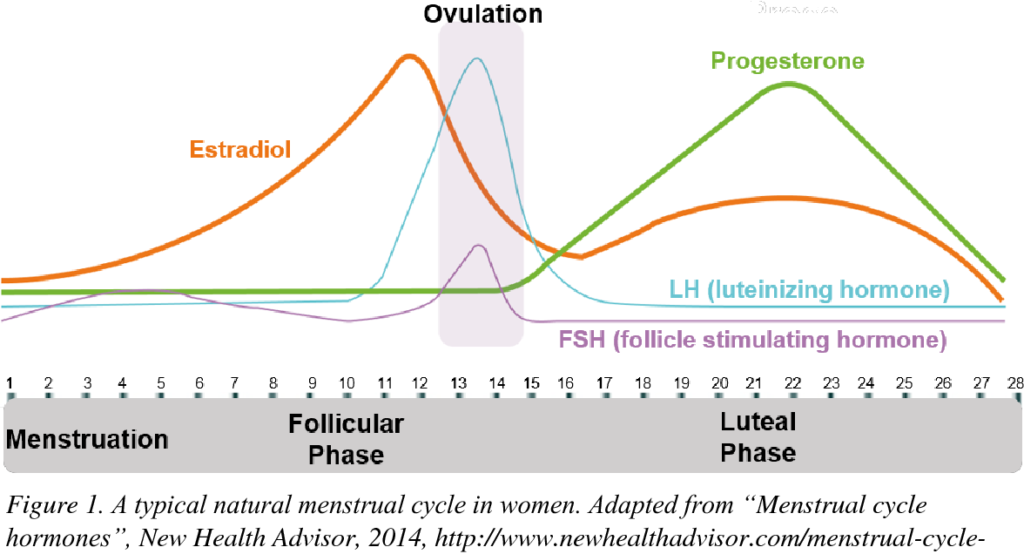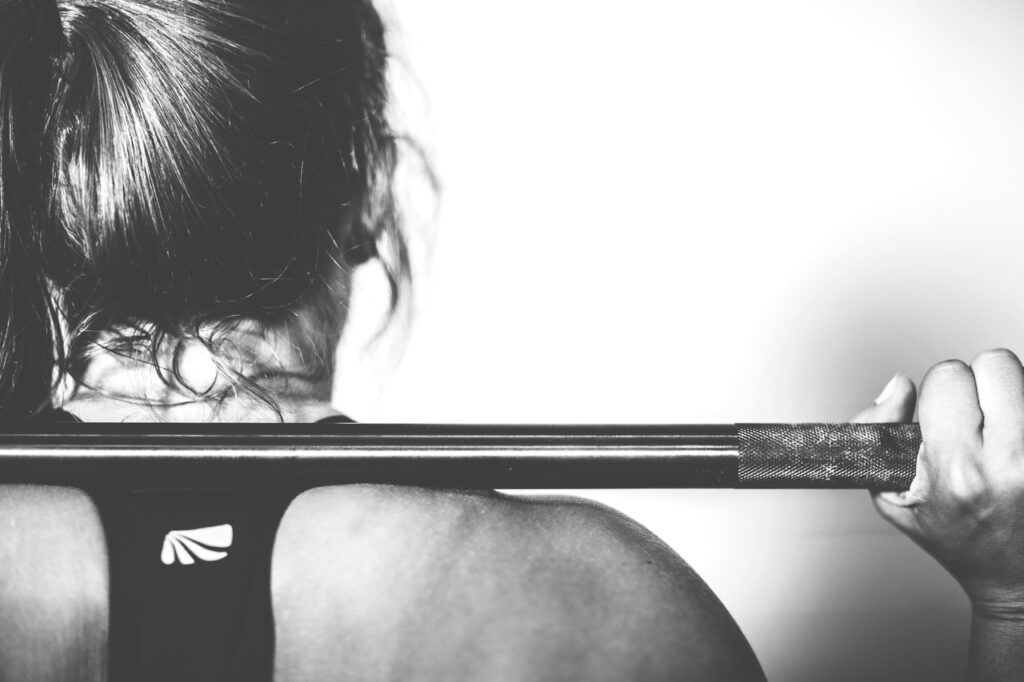Why Hormones Matter
It’s no secret that hormones play a significant role in our day-to-day lives. Hormones affect our mood, energy levels, and even how the body is shaped over time. In fact, our hormones can even predispose us to injury and disease; some favoring men and others women. For female athletes in particular, learning how to balance hormones & exercise can play a significant role in training and diet planning.
Physical changes, starting from puberty, affect the likelihood of certain musculoskeletal injuries such as ACL tears, meniscus tears, joint degeneration, and other biomechanical injuries. High intensity training can also have effects on hormone function. Therefore, understanding the balance between exercise and hormones, especially throughout monthly cycles, is crucial. Cycle syncing is the process of managing diet and exercise around natural hormone fluctuations.

Menstrual Cycle
At the beginning of the monthly cycle, follicle-stimulating hormone (FSH) has a small uptick while other hormones decrease. As a result of falling hormones and bleeding, energy levels during this time are low for 3 to 7 days.
During this time, it is ideal to pay closer attention to what your body is needing. If you’re experiencing intense symptoms, now is the time to rest. Exercise should remain light, if participating at all. Moderate activity is still possible for those with milder symptoms.
To support your body while bleeding, combine iron rich foods with vitamin C. Iron rich foods include all types of meat as well as dark, leafy vegetables. With any bleeding, iron is lost and can exacerbate fatigue. Vitamin C is necessary for iron absorption. Limiting caffeine, alcohol, and fatty foods can also keep symptoms at bay.
Follicular Phase
Following your cycle, lasting 7-10 days, estrogen begins to rise, improving energy levels with it. However, increased estrogen can cause increased muscle flexibility and decreased stretch reflex. Together, these changes may increase the likelihood of injury in the early phase.
As this phase progresses, energy will continue to rise and allow higher intensity and strength training to resume. Estrogen affects insulin absorption so you can have more carbs & calories to sustain increased activity. Broccoli, sweet potatoes, leafy vegetables, seeds, and fermented food (sauerkraut, kimchi) can metabolize estrogen and nourish follicles.
Ovulation
During ovulation estrogen, FSH, and LH are all spiking for 3-5 days. Energy will be at its highest. Now is the time for HIIT or strength training especially if you’re aiming for a personal best lift or time.
With increased demand on the body through training, anti-inflammatory foods will reduce lingering stress on tissue. Many women notice fluid retention during this phase so limiting salty foods may be helpful. Vitamin B rich foods such as nuts, seeds, whole grains, and meat also support the release of the egg.

Luteal Phase
The final 10-14 days of the cycle are often the trickiest to manage. Immediately following ovulation, estrogen drops slightly as progesterone begins to increase. What makes this phase difficult is that progesterone and estrogen will have a peak midway through the phase. Adding a higher basal metabolic rate (BMR), this helps explain food cravings and fatigue that is notorious during this time. (BMR is the minimum energy intake required for basic bodily functions). By the end of the phase estrogen and progesterone have bottomed-out, setting up the beginning of the menstrual phase.
Because multiple hormonal shifts occur in this phase, exercise needs will often vary from day-to-day. A good rule of thumb is volume > intensity. Lighter weights or slower walks/runs for extended periods will usually yield better results and prevent frustration after the ovulation highs.
As estrogen and progesterone levels fall, so should the carb-heavy diet of the ovulation phase. Magnesium rich foods such as dark chocolate, spinach, pumpkin seeds, avocado, and fish can fight fatigue and boost serotonin.
Conclusion
Balancing hormones and exercise through cycle syncing is about listening to what your body needs and not pushing it beyond what is able to do at any given time. While it may not alleviate symptoms entirely, it can help create a consistent, manageable cycle that still allows for training gains. For more tips to get the maximum out of your workout and recovery, check out our blog.

